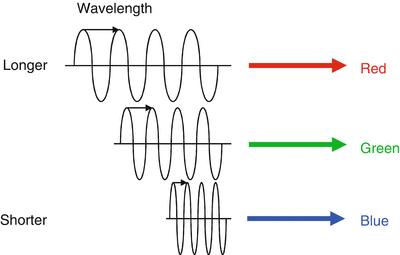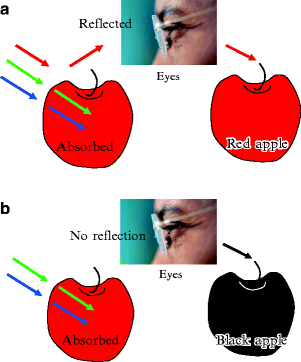(1)
Department of Endoscopy, Fukuoka University Chikushi Hospital, Fukuoka, Chikushino, Japan
Abstract
Dual wavelength observation: Projection of light with two central wavelengths, 415 nm and 540 nm, enables us to visualize the mucosal microvascular architecture and mucosal microsurface structure with higher contrast than that is possible with white-light imaging. Bandwidth narrowing: By narrowing the bandwidth of the projected light (bandwidth narrowing), we improve the contrast when examining the microvasculature.
Keywords
AbsorptionLight wave lengthMagnifying endoscopyNarrow-band imaging (NBI)ReflectionScattering7.1 Overview
Narrow-band imaging (NBI) is a new technology developed in collaboration with Olympus Medical Systems Corp. and the National Cancer Center Hospital East [1, 2]. The principles of NBI have been explained in a number of publications, but few of these are readily understandable by endoscopists. A grasp of the principles of NBI is needed to understand how the endoscopic findings with NBI are derived, as the phenomena visualized using NBI are different from those seen when white light is projected. In this chapter, using the materials kindly provided by my friends at Olympus [2] and an article of mine [3], I will try to present the bare minimum knowledge of optics required, in as easily understood fashion as possible.
I will start by noting that there is a tendency when considering the principles of NBI to go no further than the phrase “narrow band,” and concentrate solely on the bandwidth narrowing aspect. However, my understanding is that it is more accurately referred to as dual wavelength imaging with bandwidth narrowing.
For your understanding, in this chapter I will not attempt to explain all phenomena associated with NBI, but instead I am simplifying what occurs in the actual clinical situation to make it easier to understand.
7.2 Knowledge of Optics Required to Understand the Principles of NBI
7.2.1 Relationship Between Light Wavelength and Color
Light is an electromagnetic radiation with properties of both waves and particles. As shown in Fig. 7.1, the definition of wavelength is the distance between one peak and the next of the waveform at a given frequency.


Fig. 7.1
Relationship between wavelength and color
The visible wavelengths that can be perceived by humans are in the range 400–600 nm. To human eyes, light with a longer wavelength will be seen as red, with a shorter wavelength as blue, and in between as green.
7.2.2 Change in Color According to the Wavelength of the Incident Light: Reflection and Absorption
Specifically, white light is a combination of the primary colors red, green, and blue. When projected onto the surface of an object, each primary color will be absorbed and reflected differently.
A practical example is shown in Fig. 7.2a. When white light is projected onto a red apple, the green and blue wavelengths are absorbed by the pigments on the apple surface, and red light is reflected without absorption. The reflected light with red wavelengths is picked up by the human eye, and the perception is that “the apple is red.”


Fig. 7.2
Light absorption and reflection and human perception of color. (a) When white light is projected onto a red apple, the red skin of the apple absorbs the green and blue wavelengths, and reflects red light. The perception is therefore that “the apple is red.” (b) When red light is omitted and only the dual wavelengths green and blue are projected onto the same red apple, the apple absorbs the green and blue wavelengths, and no light is reflected. The perception is therefore that “the apple is black”
On the other hand, as shown in Fig. 7.2b, when we omit red light and project light comprising only green and blue wavelengths, the green and blue wavelength light is absorbed by the pigments on the apple surface. The human eye sees no light reflected at all, and as a result the perception is that the apple has no color, or “the apple is black.”
In general, the human eye sees light of a certain wavelength reflected from an object and perceives the object as being that color.
Conversely, NBI is based on the theory, that “if we use a color that is specifically absorbed by the mucosal pigments, then we will get no reflected light, and we should be able to see that pigment as black with a high degree of contrast.”
7.3 Why Does NBI Use Bands of Two Central Wavelengths 415 nm (Blue) and 540 nm (Green)?
7.3.1 Summary: Reason for Using Dual Wavelengths and Clinical Effects
1.




The dual wavelengths [415 nm (blue) and 540 nm (green)] do not penetrate deeply into the translucent mucosal subepithelial tissue, with little scatter, and are strongly absorbed by hemoglobin, enabling visualization of blood vessels with a high degree of contrast.
< div class='tao-gold-member'>
Only gold members can continue reading. Log In or Register to continue
Stay updated, free articles. Join our Telegram channel

Full access? Get Clinical Tree







